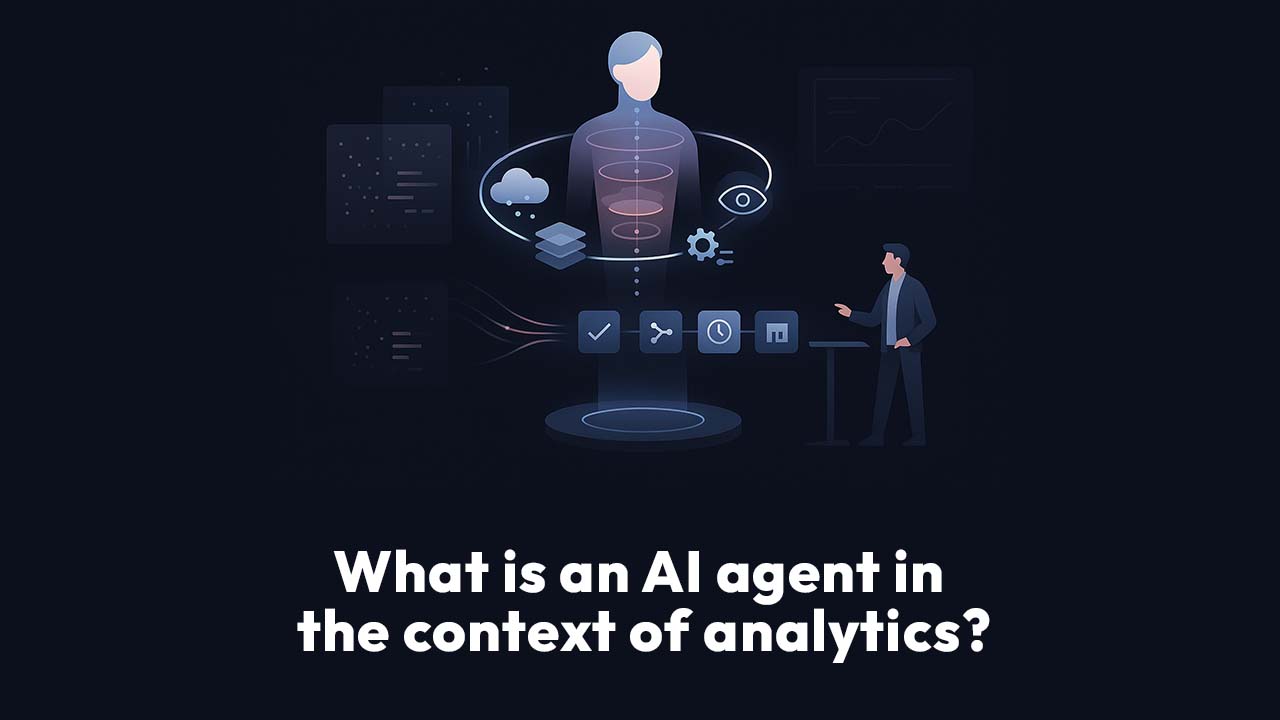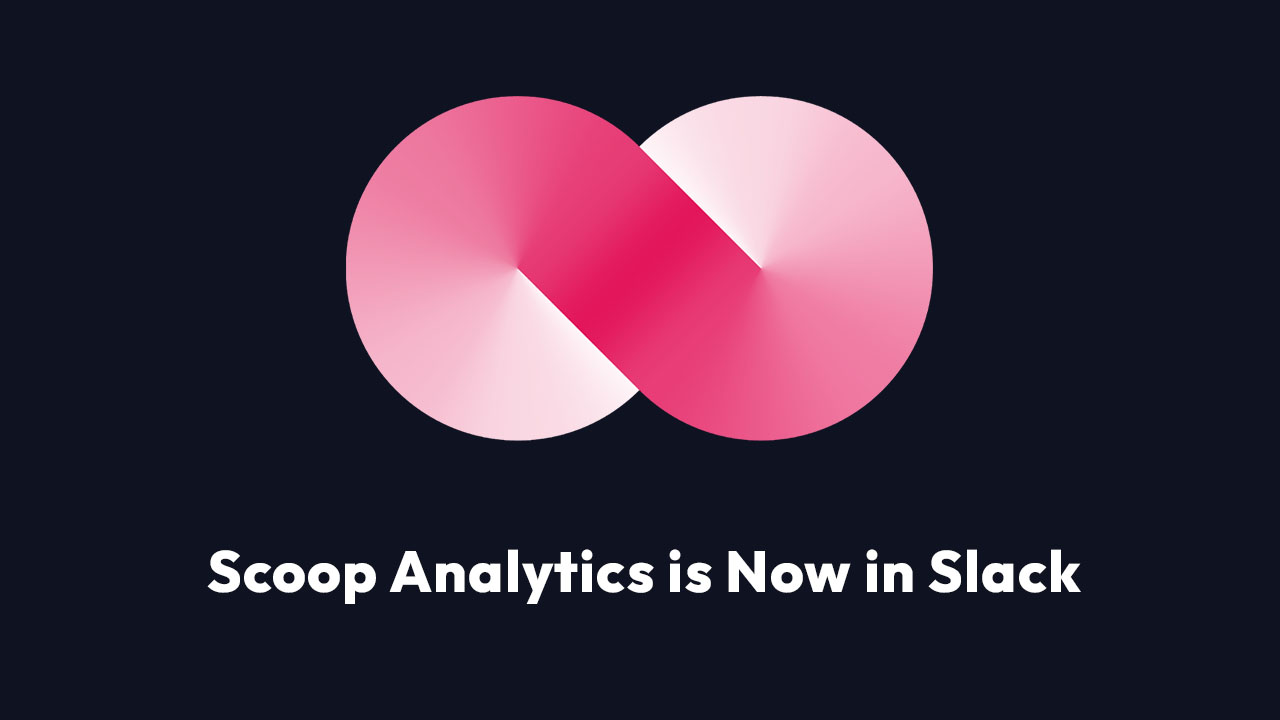Why Analytics Needs to Do More Than Inform
This week I sat in on a demo with a fractional marketing leader at a mid-market B2B software company. About 20 minutes in, after seeing our conversational intelligence platform in action, he said something that stopped me in my tracks:
"I think there's like, two personas or use cases... But, you know, just being selfish to really key in on, like, I don't need more tech. I think I need to push the needle right?"
That one sentence perfectly captured what we're seeing across hundreds of conversations with revenue leaders, data teams, and executives. The analytics market is drowning in features, but starving for impact.
The Context: A Leader Swimming in Tools
This marketing leader had joined his company as a contractor six months earlier, brought in specifically to build out their go-to-market function. He'd established outbound enterprise motions, revamped the marketing strategy, hired a VP of Marketing, and was now working directly with the CEO.
In other words: someone who gets things done.
When we showed him our agentic AI analytics capabilities—the natural language queries, the automated deck generation, the ML-powered insights—his reaction wasn't the typical "wow, that's cool." Instead, he immediately went to the place that matters:
"How much does it cost? How long does it take to implement?"
And then: "How do I actually use this to move the needle?"
The Dashboard Dead End
What struck me most about this conversation was his clarity about the real problem. He didn't need another tool to create prettier dashboards or answer basic questions. He already had that—everyone has that now.
His pain points were more sophisticated:
Week-over-week tracking in HubSpot: "Not really great today. I can ask the question, but do I have dashboards or sheets that I can come back and manipulate and track?"
Health scores going unused: "There's health scores, for example, right now on the CS side that aren't being looked at."
The report generation treadmill: Creating endless PowerPoint decks for leadership meetings, knowing they'd be outdated by the time they were presented.
But here's what really mattered to him: "Not just the Q and A with the RAG model, not just being able to create PowerPoint decks, but this constant feedback loop that I want to then write back to maybe a CRM or a spreadsheet over time."
This is the evolution of business intelligence platform requirements that most vendors are missing.
From Static Reporting to Dynamic Feedback Loops
The traditional analytics stack answers the question: "What happened?"
Modern conversational intelligence platforms answer: "Why did it happen?"
But what this leader was articulating—and what I'm hearing more and more—is the need for systems that answer: "What should happen next, and can you make it happen automatically?"
It's the difference between:
- Creating a report on customer health scores → Writing those scores back to the CRM in real-time
- Generating a weekly activity dashboard → Having dynamic fields that update automatically
- Running ad-hoc queries when someone asks → Building self-updating feedback systems
This isn't just about analytics anymore. It's about operational intelligence—systems that don't just inform decisions, but actively participate in business processes.
The "Too Much Tech" Paradox
What made this conversation so valuable was his brutal honesty about tool proliferation:
"I think I need, I need to push the needle right? So, like, I'm thinking about two use cases that I have that, you know, they're maybe easy, maybe not."
He was forcing himself—and forcing us—to think beyond features. Not "can it do this?" but "will this actually change how we operate?"
This is the bar that agentic AI analytics platforms need to clear now. It's not enough to be:
- Faster than traditional BI
- More accessible than data science tools
- More powerful than spreadsheets
We need to be operationally transformative. We need to close the loop.
The Moment of Recognition
The conversation shifted when we discussed write-back capabilities—the ability to push calculated scores, AI-generated insights, and automated analyses back into systems of record like HubSpot or Salesforce.
"So how does that work?" he asked, leaning forward. This wasn't casual interest; this was the first moment where he saw something that could actually push the needle.
The use case he immediately articulated: Take sentiment analysis, activity patterns, and other signals from multiple sources, synthesize them into a health score using AI, and write that score back to every account record in HubSpot automatically.
Not a report. Not a dashboard. Not even an insight.
An automated operational process that makes the CRM smarter without anyone having to do anything.
What This Means for the Market
This conversation crystallized something I've been sensing but hadn't fully articulated: we're at an inflection point in how companies think about their business intelligence platforms.
The last generation of tools solved the "data access" problem. They made it possible for more people to query data and build dashboards without writing SQL.
The current generation is solving the "insight speed" problem. Conversational intelligence platforms and agentic AI analytics make it possible to get answers in seconds instead of days.
But the next generation needs to solve the "operational integration" problem. Not just showing you what's happening, but actively participating in making your business better—automatically, continuously, without manual intervention.
This fractional marketing leader at a $10-15M company articulated what enterprises are starting to demand:
Analytics that don't just inform—they transform.
Intelligence that doesn't just report—it acts.
Tools that don't just answer questions—they solve problems.
The Old Way Is Killing Us
Near the end of our call, he said something that felt almost cathartic:
"The old days of asking for new reports and dashboards are definitely going to kill us all. So I think this is the new way."
There was relief in his voice. Not because he'd found a magic solution, but because he'd articulated what so many leaders are feeling: the traditional approach to business intelligence is broken, and we all know it.
Dashboards pile up. Reports multiply. Data teams get overwhelmed with ad-hoc requests. Meanwhile, the actual business problems—the ones that matter—remain unsolved.
The gap between what analytics can do and what it should do has never been wider.
What I'm Taking Away
This wasn't a typical excited early adopter who loves new technology. This was a practical operator who's deployed enough tools to be skeptical of adding another one.
And his questions were the right questions:
- How much does it cost?
- How long to implement?
- How does it actually push the needle?
- Can it close the feedback loop?
These are the questions that separate useful agentic AI analytics platforms from expensive science projects.
His journey in 30 minutes—from polite skepticism to genuine interest—happened precisely when the conversation shifted from capabilities to operational transformation. Not "look what it can show you" but "look what it can do for you."
For those of us building conversational intelligence platforms and business intelligence platforms, this is the new bar. Our tools need to be:
- Fast to implement (hours, not months)
- Actually affordable (hundreds per month, not hundreds of thousands)
- Operationally integrated (writing back, not just reading)
- Self-service enabled (business users, not just analysts)
- Continuously valuable (feedback loops, not one-time insights)
The Question for Your Organization
As I reflect on this conversation, I keep coming back to his fundamental challenge:
"I don't need more tech. I need to push the needle."
Is your analytics stack pushing the needle? Or is it just adding more dashboards to the pile?
Are your business intelligence platforms creating feedback loops? Or are they just creating more reports?
Is your agentic AI analytics actually making your business smarter? Or is it just making your analysts busier?
The next generation of business intelligence isn't about better queries or prettier charts. It's about tools that actively participate in making your business better—automatically, continuously, and measurably.
That fractional marketing leader knew what he needed. The question is: does your analytics stack deliver it?








.png)